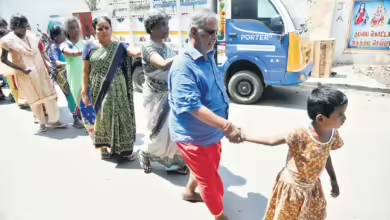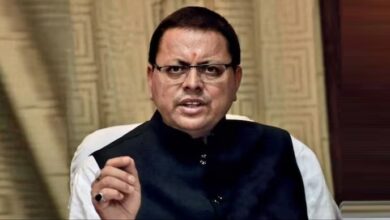Examining the No-Confidence Motions of the Past as the Modi Government Faces Its Second
Data compiled by a think tank reveals that all previous no confidence motions have either been defeated or resulted in inconclusive votes, as the Narendra Modi government faces its second no confidence motion in the Lok Sabha amid the opposition’s steadfast demand for a thorough statement on the ongoing violence in Manipur. On three occasions, though, a “motion of confidence” vote has resulted in the collapse of a government.
In order to push Prime Minister Narendra Modi to address the thorny Manipur issue, Congress MP Gaurav Gogoi on behalf of the opposition coalition tabled a no-confidence resolution against the Modi administration in the Lok Sabha on Wednesday. Following the requisite headcount of over 50 MPs, Lok Sabha Speaker Om Birla approved the proposal.
What is a motion to remove confidence?
According to Rule 198 of the Rules of Procedure and Conduct of Business in the Lok Sabha, a no-confidence motion is a formal request made by a member against the government in the Lok Sabha. The leaders of the opposition Indian National Developmental Inclusive Alliance (INDIA) contend that by cornering the government on the Manipur issue and compelling Modi to speak on it in Parliament, they will win the battle of perception even though the no-confidence motion is destined to fail the numbers test.
According to statistics provided by PRS Legislative Research, Indira Gandhi’s administration has been the target of the most no-confidence motions (15) in independent India’s history.
first-ever motion to remove confidence
August 1963 – Congressman Acharya Kripalani introduced the first-ever no-confidence resolution against Prime Minister Jawaharlal Nehru in the third Lok Sabha in August 1963. This happened just after the 1962 war, which China ultimately won. The discussion lasted four days and more than 20 hours. Ultimately, the measure was lost with just 62 MPs in favor and 347 voting against it.
There were the most no-confidence votes against Indira Gandhi.
In January 1966, Indira Gandhi, who was a Rajya Sabha member at the time, became prime minister. Hirendranath Mukherjee, a member of the Communist Party of India, proposed a no-confidence vote against her administration. 61 MPs voted in favor of the proposal, but 270 MPs against it, hence it was rejected.
A second no-confidence motion against Indira Gandhi’s administration was brought out in November 1966 by UM Trivedi, a renowned lawyer and Bharatiya Jan Sangh leader. With 235 MPs voting against the proposal and 36 MPs voting in favor, it was rejected. Atal Bihari Vajpayee introduced a no-confidence resolution against the Indira Gandhi administration in the fourth Lok Sabha in March 1976. On March 20, 1967, there was a vote on the government’s trust, and 162 MPs abstained while 257 supported the administration. This was the biggest number of votes ever cast in favor of a motion of no confidence in the government up to that point.
In all, Indira Gandhi dealt with 15 motions while serving as prime minister for 16 years (1966–1977 and again from 1980–her murder in October 1984).
Following a vote of no confidence, the government is overthrown.
A no-confidence motion resulted in a government being overthrown for the first time in July 1979. YB Chavan made the motion against the Morarji Desai administration. Despite the fact that the discussion was still unresolved, Desai left his position and stopped participating in politics. Even though there was no vote on the motion, this was the only occasion a government was overthrown after one.
The VP Singh administration in 1990, the H D Devegowda government in 1997, and the Atal Bihari Vajpayee government in 1999 were the three governments that collapse during a vote of confidence.
Prior to the Modi administration
Prior to the Atal Bihari Vajpayee administration, in August 2003, then-leader of the opposition Sonia Gandhi presented a no-confidence vote. On August 19, 2003, the resolution was lost after a more than 21-hour discussion, with 314 MPs voting against it and 189 voting in favor.
Motion of no confidence in Narendra Modi
In 2018, Telugu Desam Party member Srinivas Kesineni introduced the most recent motion of no-confidence against the Narendra Modi administration. On July 20, 2018, the proposal was put to a vote after about 11 hours of discussion. 135 MPs voted in favor of it, while 330 did not. The motion was unsuccessful. The statement by Congressman Rahul Gandhi, who questioned the administration on the rise in crimes against minorities and women, the Rafale deal, and the effects of demonetisation, is one of the most well-known images from the discussion.







